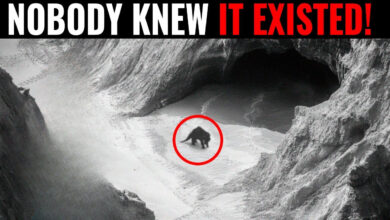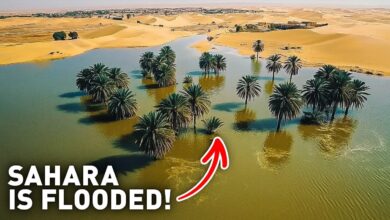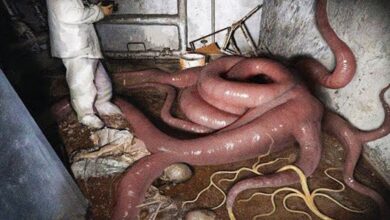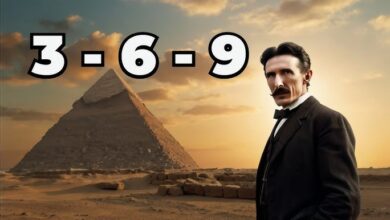Scientists Discovered A Lost Civilization In The Jungle More Ancient Than You Think

In the dense forests of Guatemala, a groundbreaking discovery has revealed a vast hidden Maya city, transforming our understanding of this ancient civilization. This newly uncovered metropolis showcases a civilization far more complex and grand than previously imagined. The Maya, known for their towering pyramids, intricate writing systems, and advanced astronomy, left behind an astonishing legacy that continues to captivate scholars.
Meanwhile, the discovery of the ancient *Olmec* civilization, which predates the Maya and Aztecs by centuries, adds another layer of mystery to Mesoamerican history. The *Olmecs*, often referred to as the “mother culture” of Mesoamerica, are most famous for their colossal stone heads, massive sculptures carved from volcanic rock weighing up to 40 tons. These heads, featuring intricate details and helmet-like headdresses, were likely representations of elite rulers or important figures in *Olmec* society. Despite their size and weight, the *Olmecs* transported these stones from quarries located over 60 miles away, though the exact methods remain unknown.
The first major *Olmec* discovery occurred in 1862 when a colossal stone head was found near Tres Zapotes in Veracruz, Mexico. Over time, more heads were uncovered, leading to extensive archaeological studies in the 20th century. Scholars like Matthew Stirling conducted excavations that shed light on the *Olmec* civilization, revealing cities such as San Lorenzo and La Venta, which served as major cultural centers.
The *Olmec* civilization’s decline around 400 BCE remains a mystery. Theories range from environmental changes, such as river shifts causing crop failures, to internal power struggles or invasions. Some fringe theories even suggest connections to Atlantis or extraterrestrials, though these ideas lack substantial evidence.
Despite their mysterious end, the *Olmecs* laid the foundation for many cultural and religious practices later adopted by the Maya, Aztecs, and other Mesoamerican civilizations. Their contributions, including the Long Count calendar, the concept of zero, and the Mesoamerican ballgame, continue to influence modern understanding of ancient America.
This deep dive into the *Olmec* and Maya civilizations offers a glimpse into their remarkable achievements, while their enduring mysteries invite further exploration and discovery.
Morsley conducted in-depth studies of Tikal’s ruins, meticulously documenting its structures through drawings, maps, and photographs. His contributions, along with the detailed publications by archaeologists Edwin Shook and William Coe, provided some of the first comprehensive records of Tikal’s architecture and artistry. This research laid the foundation for future scientific investigations, attracting attention from the global archaeological community.
Between 1956 and 1970, significant archaeological excavations were conducted by the University of Pennsylvania Museum of Archaeology and Anthropology. Led by Edwin Shook and William Coe, the Tikal Project aimed to systematically excavate key areas of the site, restore major structures, and explore the city’s history, architecture, and culture. Among their most notable discoveries was the tomb of Jasaw Chan K’awiil beneath Temple 1 (the Temple of the Great Jaguar), containing intricate jade masks, jewelry, pottery, and ceremonial items. The jade masks were symbols of Maya elite power and divinity, reflecting the status of rulers like Jasaw Chan K’awiil.
The excavations also revealed tombs with vaulted ceilings built using the Maya corbel arch technique, a significant architectural achievement. Tikal’s stone monuments, such as stelae, bear hieroglyphic inscriptions documenting the reigns of kings, military victories, and political alliances. Epigraphers have painstakingly deciphered Maya glyphs, unveiling the city’s complex political history and its interactions with other Maya cities, like Calakmul.
Tikal’s history also shows evidence of extensive warfare, with defensive structures like earthworks, moats, and large embankments designed to repel invaders. Archaeologists have unearthed obsidian blades, flint points, and other weapons, demonstrating the city’s martial nature. Some burial sites included remains of warriors, buried with weapons and armor, signifying the valorization of military figures in Tikal’s society.
The city’s iconic architecture includes Temple 1, built to honor Jasaw Chan K’awiil I, and Temple 4, which reaches 70 meters high, offering panoramic views over the jungle. Temple 4 was completed during the reign of Yik’in Chan K’awiil and symbolized the ruler’s divine connection to the heavens. Tikal’s ceremonial complexes, such as the Central Acropolis and North Acropolis, served as palaces, administrative centers, and burial grounds for the Maya elite.
In addition to its monumental structures, Tikal’s urban planning included advanced causeways (sacbeob) that connected different parts of the city and a sophisticated water management system with reservoirs and canals. These systems ensured a consistent water supply during dry seasons, supporting Tikal’s large population.
There is also evidence that Tikal’s layout may have been influenced by celestial events, with some researchers suggesting that its temples and pyramids align with star patterns and significant dates in the Maya calendar, highlighting the Maya’s deep knowledge of astronomy.
When comparing Tikal to the Egyptian pyramids, both served as monumental structures and burial sites for elite individuals. However, while Egyptian pyramids are primarily solid structures, Tikal’s pyramids combined tombs with temples for rituals. Additionally, Tikal’s hieroglyphic carvings provide a more detailed historical narrative than the Egyptian pyramids, offering a unique glimpse into the political and cultural history of the ancient Maya civilization.








